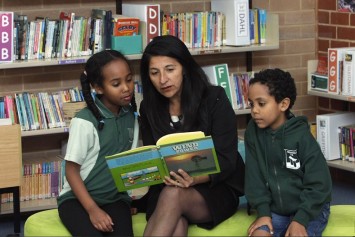Australie: les étudiant(e)s défavorisé(e)s victimes de l’insuffisance des ressources
Les étudiant(e)s défavorisé(e)s sont tout particulièrement victimes de ces ressources insuffisantes dans les écoles australiennes. C’est l’une des conclusions des versions détaillées du programme international pour le suivi des acquis des élèves (PISA) mené par l’Organisation de coopération et de développement économiques et de l’International Association for the Evaluation of Educational Achievement’s Trends in International Mathematics and Science Study (TIMSS). Les versions approfondies des rapports PISA et TIMSS comparent la performance des systèmes scolaires des pays développés.
« Les nouvelles données confirment que l’écart des résultats entre les étudiants de milieux favorisés et défavorisés en Australie correspond à quelque trois années de scolarité », a souligné Correna Haythorpe, Présidente fédérale de l’Australian Education Union (AEU). Elles révèlent également « les pénuries graves de moyens financiers » qui contribuent à cette situation, a-t-elle rappelé. « Comment peut-on attendre des étudiants qu’ils réussissent lorsqu’ils se retrouvent dans des écoles qui ne disposent pas des ressources fondamentales nécessaires à leur éducation? »
Désavantage spécifique
Ces données illustrent comment le déficit au niveau de l’éducation est lié à la pénurie de moyens financiers dans les écoles fréquentées par les étudiant(e)s défavorisé(e)s. En effet, comme l’indique Correna Haythorpe, les responsables de ces écoles ont signalé que:
· 55% des étudiant(e)s ont fréquenté des écoles où l’enseignement des mathématiques était handicapé par un manque de ressources;
· 69% ont fréquenté des écoles où c’est l’enseignement des sciences qui était touché; et
· 34% des étudiant(e)s situé(e)s dans le bas de l’enquête - Student Experience Survey(SES -la seule enquête complète portant sur les étudiants de l’enseignement supérieur en Australie) avaient fréquenté des écoles où l’enseignement était entravé par des infrastructures inadéquates, à comparer aux 12% de ces étudiant(e)s situé(e)s dans la fourchette haute du SES.
D’après ces données, les étudiant(e)s australien(ne)s situé(e)s dans le quart inférieur du SES ont six fois plus de probabilités d’avoir fréquenté des écoles manquant d’un personnel qualifié ou d’un personnel de soutien. « C’est une démonstration éclatante de la manière dont nos écoles sont sous-financées et comment ces pénuries s’ajoutent aux obstacles que doivent affronter les étudiants défavorisés », selon Correna Haythorpe.
Gonski
Elle a également souligné le fait que le plan du Premier ministre australien, Malcolm Turnbull, visant à « abandonner le financement basé sur les besoins Gonski après 2017 signifie que de nombreuses écoles n’atteindront jamais le niveau de ressources dont elles ont besoin pour leurs étudiants ». Turnbull doit abandonner son projet de mettre fin au programme Gonski après 2017 et donner aux écoles un investissement complet de six années de financement ciblé afin que toutes les écoles puissent atteindre la norme de ressources pour l’éducation recommandée par le rapport Gonski, a-t-elle insisté.
Correna Haythorpe a rappelé comment les précédents rapports PISA ont montré que les systèmes scolaires où la répartition du financement est la plus équitable affichent des performances globales supérieures.

[Fri, 07 Apr 2017 09:40:00 +0000] | DIGG THIS
